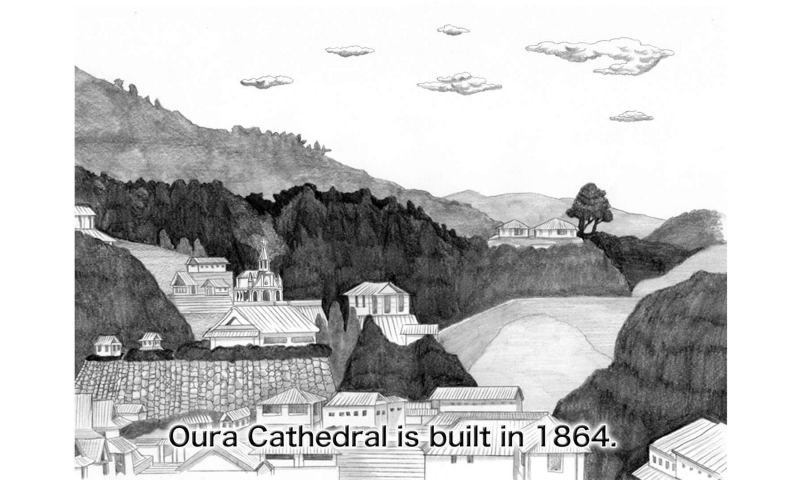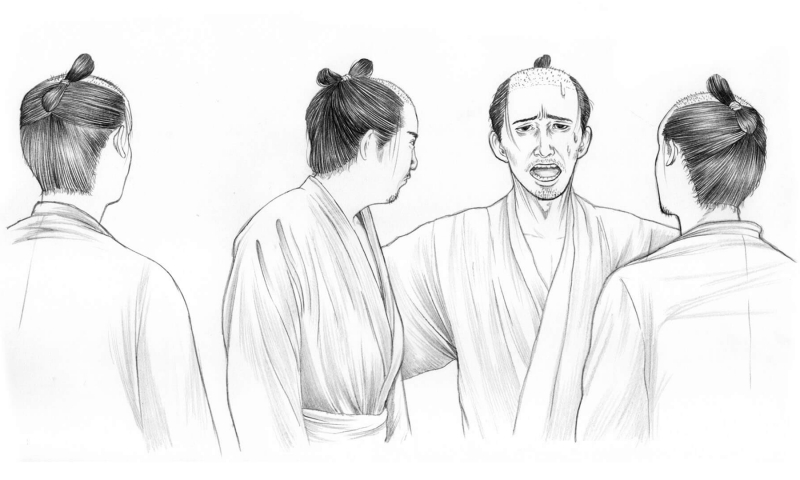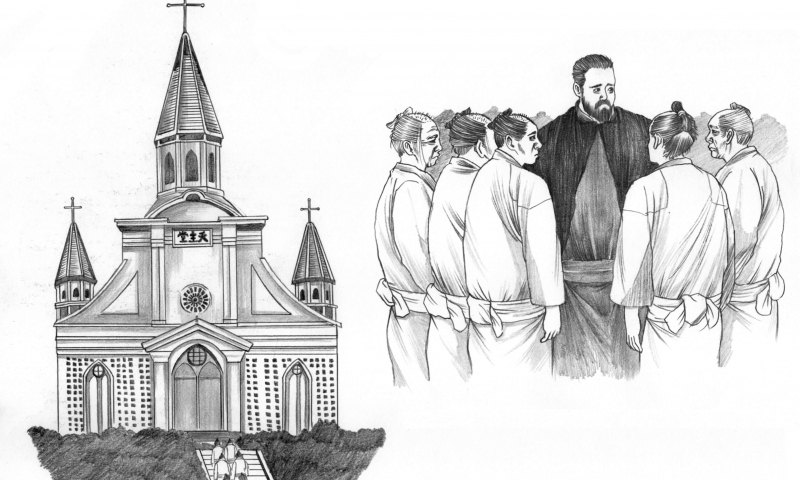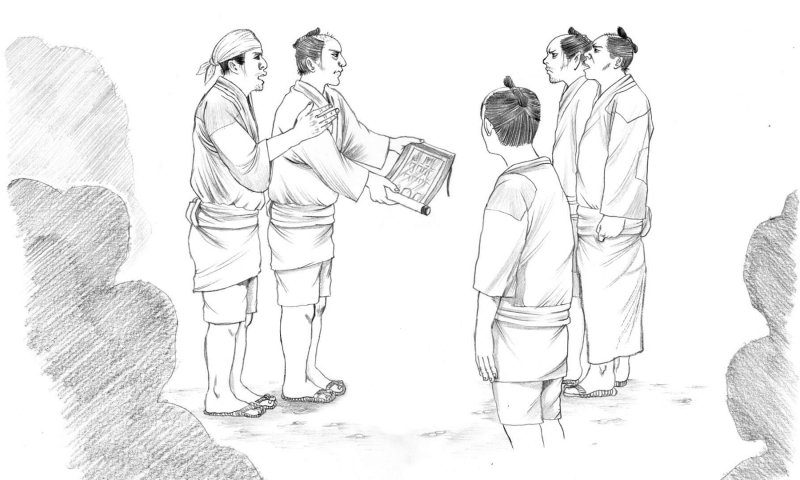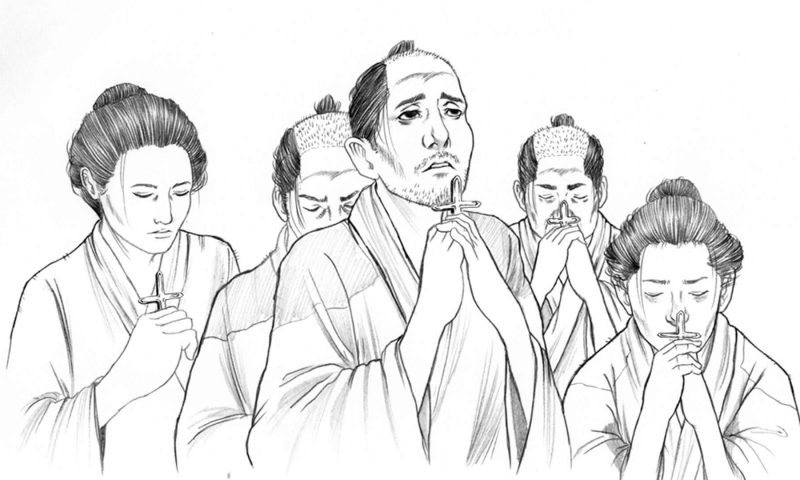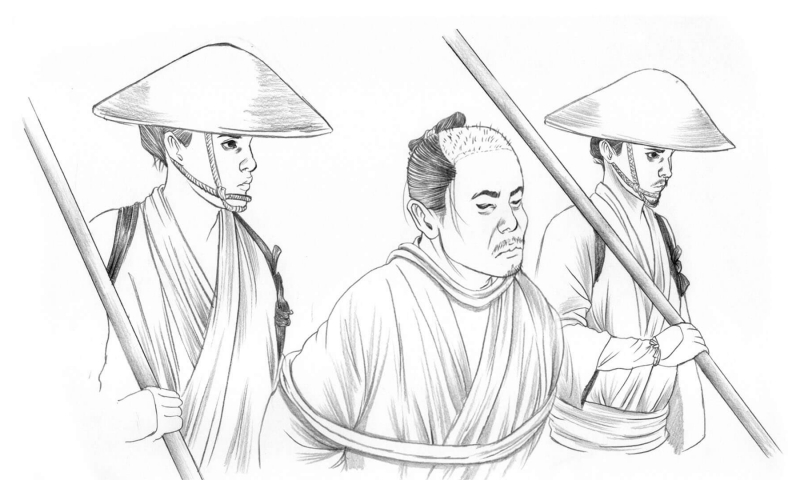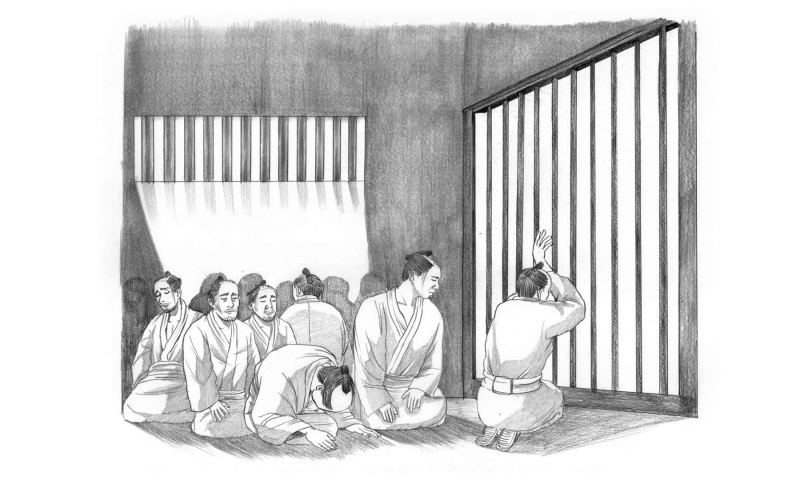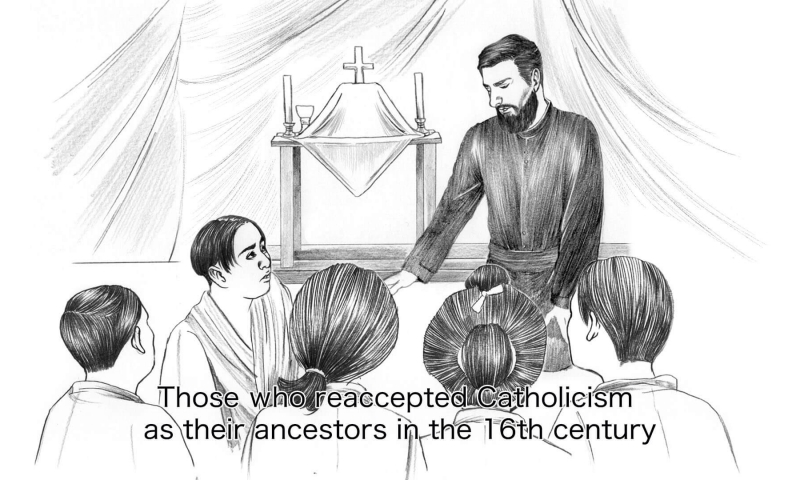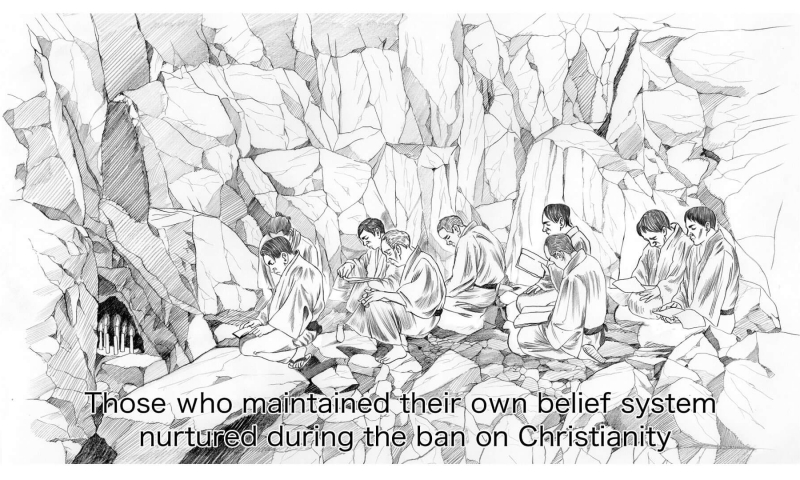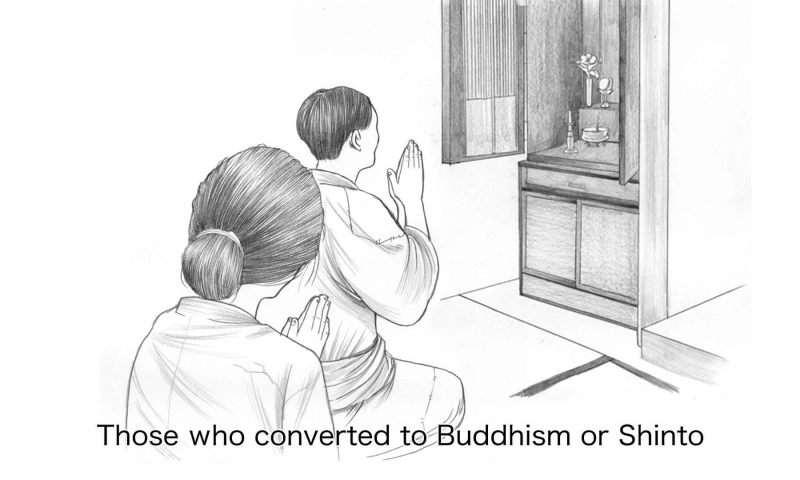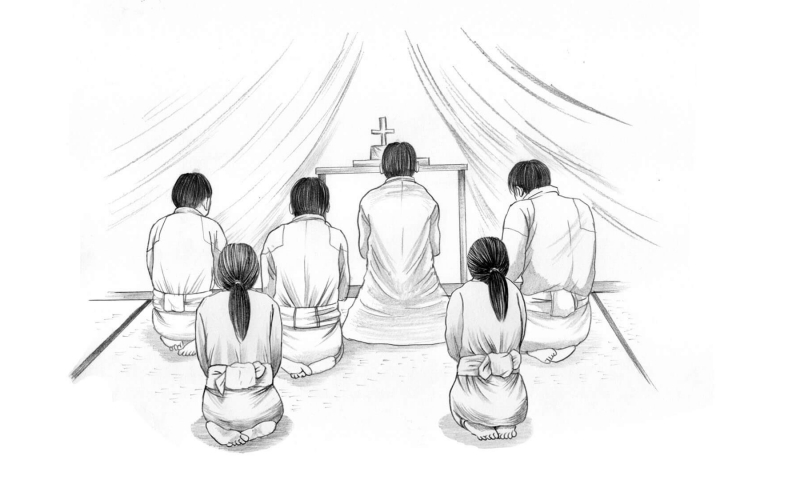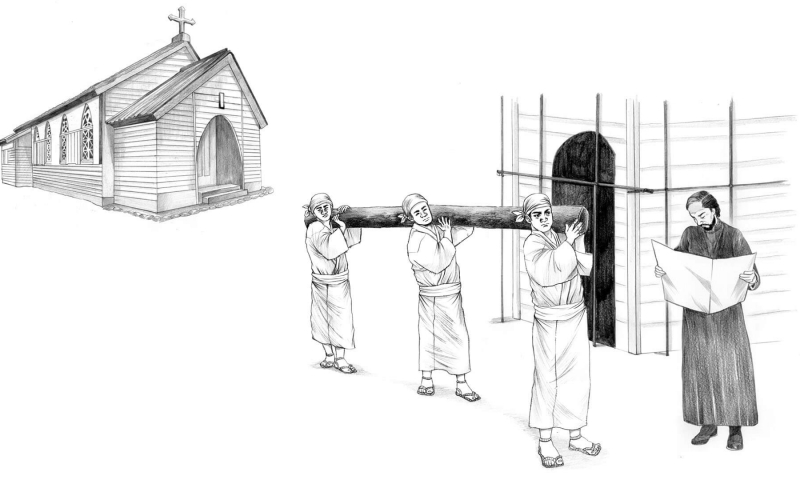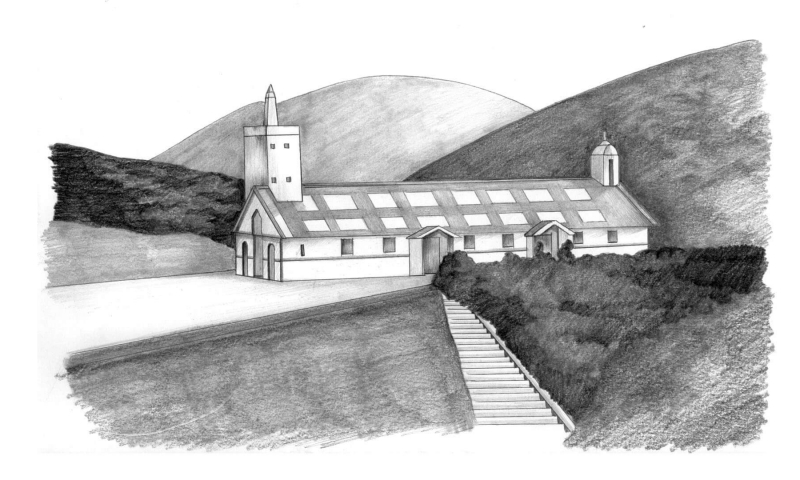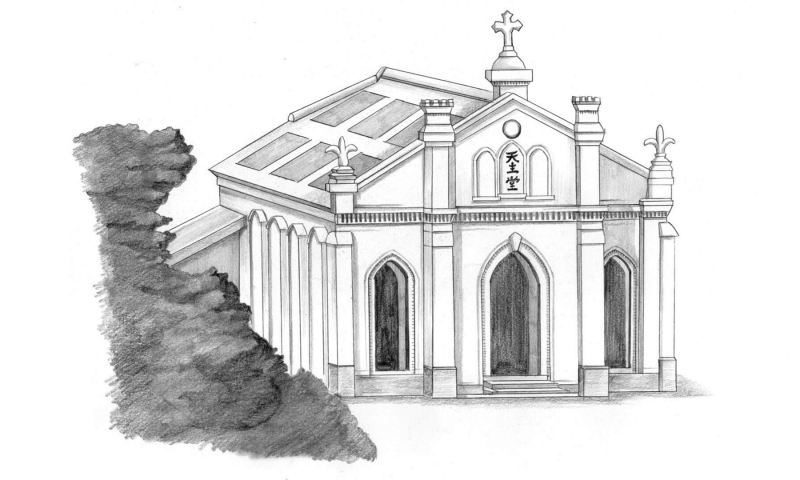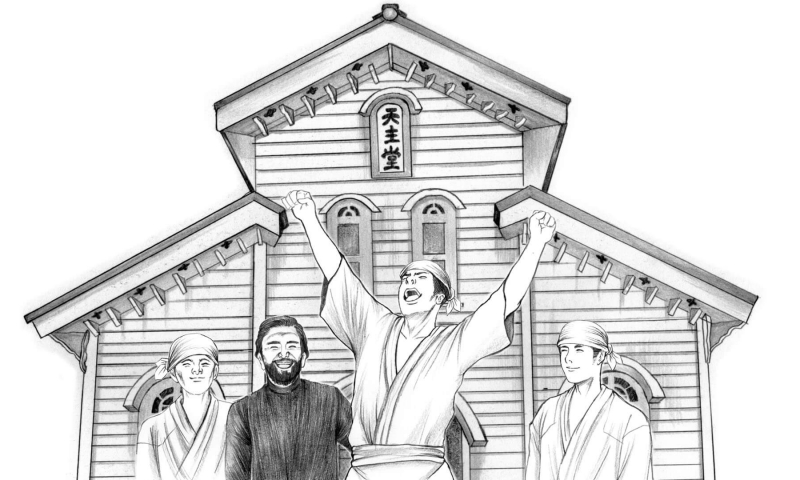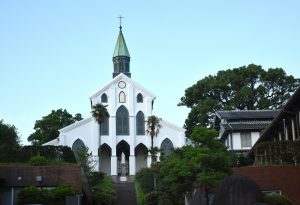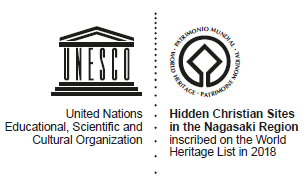History
(Ⅳ) The transitional phase triggered by contact with missionaries, leading to the end of Hidden Christians’ hiding
Hidden Christians’ tradition to maintain their faith

 (Ⅰ) Beginning of the absence of missionaries and hiding of Christians
(Ⅱ) Hidden Christians' endeavours to continue their religious faith
(Ⅲ) Hidden Christians' endeavours to maintain their religious communities
(Ⅳ) The transitional phase triggered by contact with missionaries, leading to the end of Hidden Christians' hiding
(Ⅰ) Beginning of the absence of missionaries and hiding of Christians
(Ⅱ) Hidden Christians' endeavours to continue their religious faith
(Ⅲ) Hidden Christians' endeavours to maintain their religious communities
(Ⅳ) The transitional phase triggered by contact with missionaries, leading to the end of Hidden Christians' hiding












Hidden Christians in the Nagasaki region met missionaries again at Oura Cathedral when they returned to Japan after the opening of the country to overseas trade and constructed a new Catholic church in Nagasaki. In 1865, a dozen Hidden Christians from Urakami Village in Nagasaki visited the church, and one among them confessed the Hidden Christian faith to the priest (the Discovery of Hidden Christians). This remarkable event brought about a new transitional phase for the Hidden Christian communities and their religious tradition.
Hidden Christian leaders throughout the Nagasaki region secretly visited Oura Cathedral to meet with the missionaries, asking questions about their religious practices, such as the validity of the baptisms they had performed by themselves during the absence of the missionaries and confirming whether this was acceptable according to Christian doctrine. Each village found itself facing a choice—either to receive the guidance of the missionaries or to continue with their own practices that had now been performed for almost two and a half centuries. In some villages this resulted in Hidden Christians confronting each other (the Nonaka Tumult in Shitsu Village for example).
Those who decided to receive guidance from the missionaries began to reveal their faith in public, despite the newly established Meiji Government continuing the ban on Christianity issued by the Tokugawa Shogunate. The situation escalated to such an extent that the authorities could no longer ignore emerging Hidden Christians. As a result, the suppression of Christians once again strengthened, leading to persecutions known as the Urakami Yonban Kuzure and the Goto Kuzure. However, following strong protests by Western countries to the Meiji Government about the treatment of the Hidden Christians, in 1873 the ban on Christianity was eventually lifted in Japan.
Consequently, Hidden Christians split into three groups: (1) those who reaccepted Catholicism under the guidance of the missionaries and joined the Catholic Church as their ancestors did in the 16th century, (2) those who refused to submit to the authority of the missionaries and instead continued with their own practices nurtured during the lengthy period of the ban on Christianity (this group was known as the Kakure Kirishitan), and (3) those who decided to convert to Buddhism or Shinto, leaving the Christian faith altogether after a long debate over whether to rejoin Catholicism or not.
In the villages which returned to Catholicism and accepted the guidance offered by the missionaries, the houses of former religious leaders were used as temporary churches. In most villages, there had been multiple faith communities during the ban on Christianity, and once the ban was lifted those communities merged, offering their prayers at one temporary church in each village.
The renewed contact between Hidden Christians and foreign missionaries in 1865 brought about a new transitional phase in their faith as they had to decide whether they would return to Catholicism, continue practising their faith as they had in the past, or convert to Buddhism or Shinto.
Following the lifting of the ban on Christianity in 1873, Hidden Christians who had rejoined the Catholic Church, using temporary churches and other sites as places of worship, started to build simple wooden churches in their own villages from around the mid-1880s onwards. These churches were symbols of the revival of the Catholic faith, and they can also be seen as a visible indication of the end of Hidden Christians’ hiding that had lasted over the approximately 250-year period of the ban. Many of the churches were constructed under the guidance of missionaries and were located in the centre of the village or on historic sites associated with martyrdom or other historic events. In order to accommodate the increasing number of followers, these churches were rebuilt using the same materials as those used for Western buildings, such as bricks or stones, and using Western construction methods. On the other hand, the Egami Church on Naru Island was constructed using local methods and materials that show a connection to the period of the ban on Christianity, but used local input to better adapt it to the topography and climate of its island location, for example, in order to avoid humidity damage and provide protection against strong seasonal winds.
Components of this stage
> (Ⅰ) Beginning of the absence of missionaries and hiding of Christians
> (Ⅱ) Hidden Christians' endeavours to continue their religious faith
> (Ⅲ) Hidden Christians' endeavours to maintain their religious communities
> (Ⅳ) The transitional phase triggered by contact with missionaries, leading to the end of Hidden Christians' hiding








